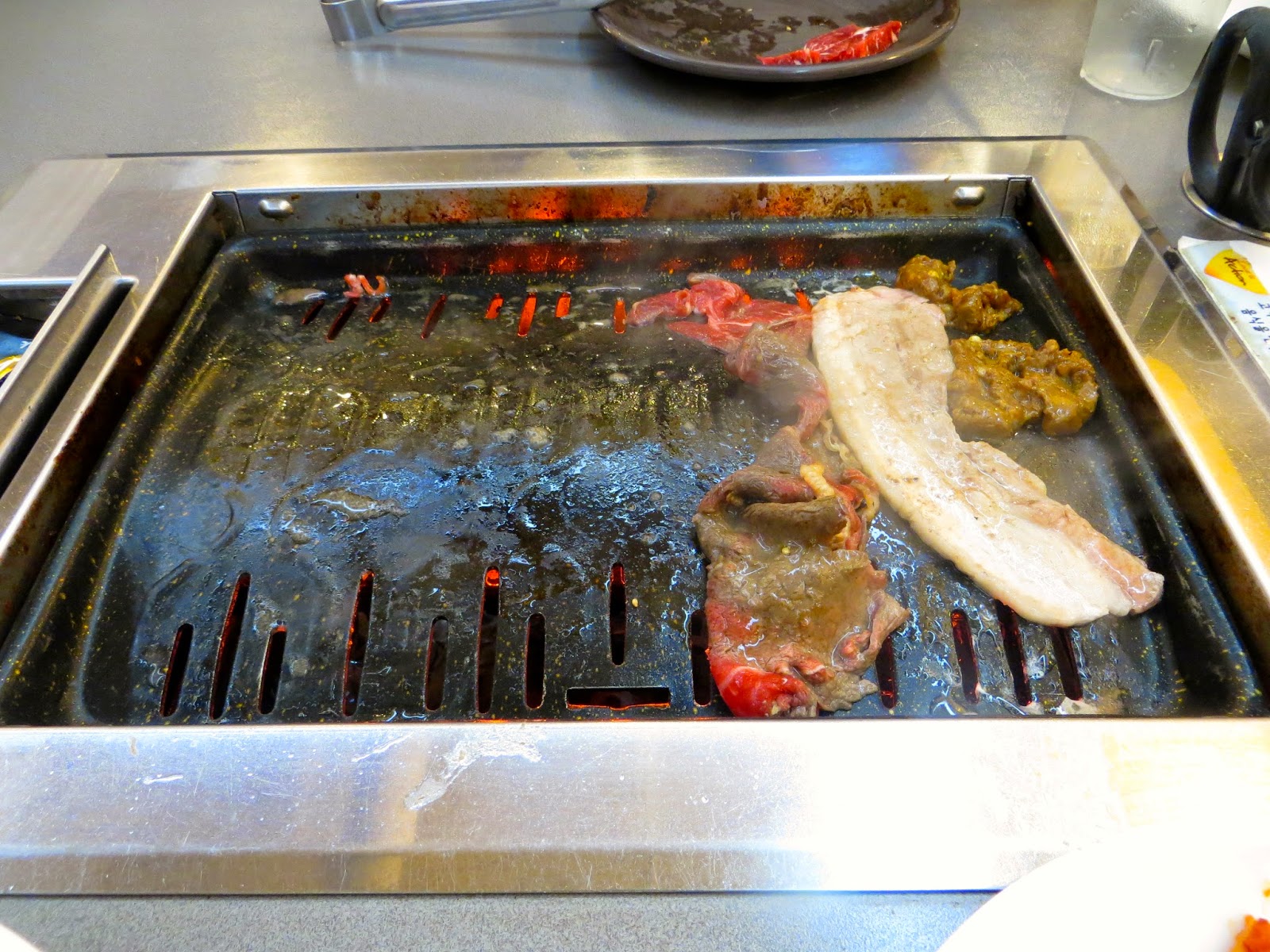It's no surprise to anyone that I absolutely love kimchi. I can make a complete meal out of this spicy, pickled Korean side dish. I was really excited to try all the different kinds of kimchi on this trip, and I can safely say that I have consumed enough kimchi on this trip to last several lifetimes.
Kimchi is usually served alongside a variety of other pickled side dishes. It's provided free of charge in addition to your entree. Each restaurant's kimchi tastes slightly different - some saltier, spicier, or more sour, others with more fish paste.
The most common kind is made with napa cabbage, though daikon radish, pictured below, is also quite common.
Apparently it's Korea's national dish.
I really enjoyed all the complimentary dishes served in addition to the main entree. They really help round out the meal, and allow you to taste a variety of flavors.
There is an exhibition at the Korean National Folk Museum about the process of making kimchi. I also saw advertisements for courses you can take to learn how to make it yourself.
Of course, I ate many other Korean foods during my trip. Before this trip, I only knew about bibimbap and kimchi, so it was quite an educational experience.
Bibimbap is a favorite of mine. Rice, various vegetables, an egg, and sometimes meat are all cooked together in a sizzling stone pot.
I also enjoyed many different hot stews, perfect for the chilly weather. The stews usually contained kimchi, tofu, sometimes meat, and other vegetables.
My friend took me to eat a very traditional dish called samgyetang, a whole young chicken stewed in a ginseng broth. The chicken is stuffed with glutinous rice, and the meat is savory and tender. Sunflower seeds sprinkled on top of the broth add a subtle nutty taste. This is the ultimate comfort food.
Even though South Korea is known to have a high cost of living, you can find cheaper meals if you go into the smaller alleys around the city and find small, family-owned restaurants. One day for lunch, we wandered into a tiny restaurant. The owners did not speak any English but they were really friendly. They served us this huge spread of food, including grilled mackerel, rice, soup, vegetables, and porridge. It was only $5 USD per person.
Conversely, the fancy and airy cafes that are located on nearly every street corner in Seoul can be pricey. These cafes, many of them open 24 hours a day, usually serve a western menu. This ham, egg, and cheese ciabatta sandwich was $5 USD. It was delicious, but pricey compared to the above lunch.
One popular experience in Korea is to eat at a BBQ buffet. There are many BBQ buffet chains, and the lower end ones cost $8-13 per person for all-you-can-eat, not a bad deal at all! Each table has a grill, and you go up to the front of the restaurant to load up on various raw meats, vegetables, and side dishes.
It's not a great photo, but below is how you cook the meat yourself. It's a really fun and filling experience.
The food was definitely one of the highlights of my trip to Seoul. In general, you can eat on a budget if you find the cheaper restaurants, for about $5-10 USD per entree. Happy eating! I thought I would get sick of kimchi, but I miss it already. Some of the souvenir shops at the airport actually sold pouches of fresh kimchi - I should have gotten some to bring back with me.













No comments:
Post a Comment